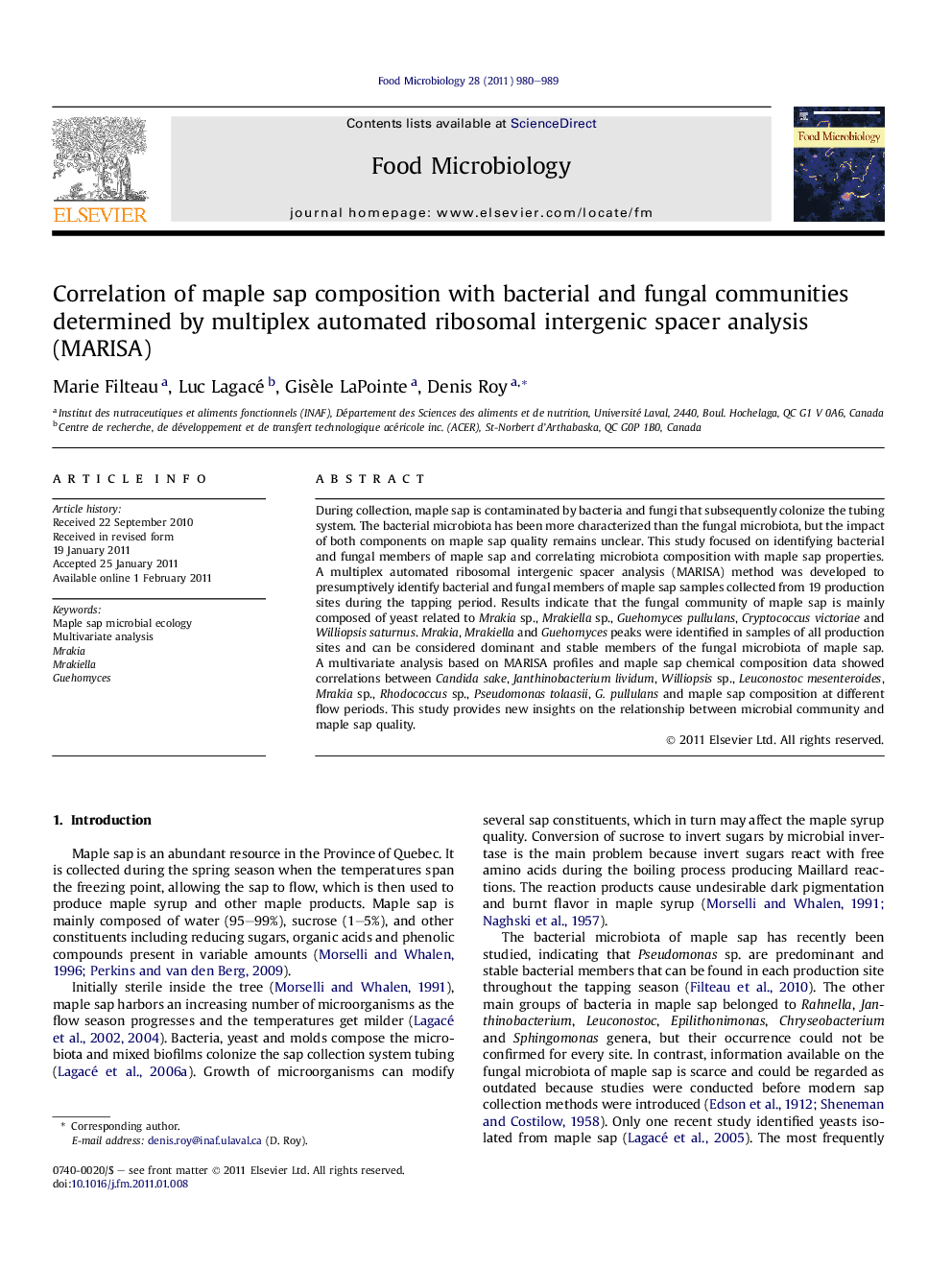| Article ID | Journal | Published Year | Pages | File Type |
|---|---|---|---|---|
| 4363160 | Food Microbiology | 2011 | 10 Pages |
During collection, maple sap is contaminated by bacteria and fungi that subsequently colonize the tubing system. The bacterial microbiota has been more characterized than the fungal microbiota, but the impact of both components on maple sap quality remains unclear. This study focused on identifying bacterial and fungal members of maple sap and correlating microbiota composition with maple sap properties. A multiplex automated ribosomal intergenic spacer analysis (MARISA) method was developed to presumptively identify bacterial and fungal members of maple sap samples collected from 19 production sites during the tapping period. Results indicate that the fungal community of maple sap is mainly composed of yeast related to Mrakia sp., Mrakiella sp., Guehomyces pullulans, Cryptococcus victoriae and Williopsis saturnus. Mrakia, Mrakiella and Guehomyces peaks were identified in samples of all production sites and can be considered dominant and stable members of the fungal microbiota of maple sap. A multivariate analysis based on MARISA profiles and maple sap chemical composition data showed correlations between Candida sake, Janthinobacterium lividum, Williopsis sp., Leuconostoc mesenteroides, Mrakia sp., Rhodococcus sp., Pseudomonas tolaasii, G. pullulans and maple sap composition at different flow periods. This study provides new insights on the relationship between microbial community and maple sap quality.
► Predominant maple sap microbial members are Pseudomonas, Mrakia, Mrakiella and Guehomyces. ► Maple sap composition is correlated with changes of microbiota during the season. ► Maple sap fungal and bacterial profiles are typical of the production site.
